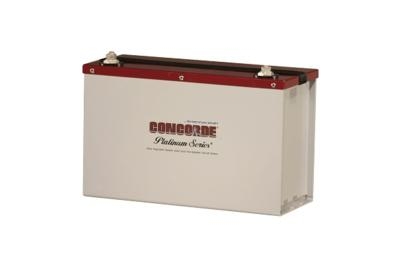Mon, Aug 26, 2013
Single, Dual Lead Acid Cells Approved For B, BA, B1, B2 & B3 Models
EASA has given ESTC approval to Airlift AS of Norway allowing for single and dual battery installations of Concorde’s Sealed Lead Acid RG-350 or RG-355 battery on Eurocopter AS350B, -BA, -B1, -B2 and B3 models. The ESTC is now available through Concorde Battery Corporation’s worldwide network of distributors.

Many cold weather and high cyclic operators have requested a Lead Acid option for use in Europe and Airlift has fulfilled this request with Concorde batteries. For conversions on a single battery installation ESTC 10044362 replaces the main 15 Ah nickel-cadmium battery with either the Concorde RG-350 or the RG-355 17 Ah Lead Acid batteries. If the aircraft has been modified with Eurocopter Service Bulletin 24.00.01 (starting in very cold weather) Airlift’s ESTC allows for the replacement of both Nickel-Cadmium batteries with Concorde RG-350 batteries.
RG-350 and RG-355 are TSO authorized and as such, have passed rigorous TSO C-173 testing for duty cycle, electrical performance, temperature extremes, shock/vibration and environmental requirements. Concorde’s valve regulated lead acid (VRLA) recombinant gas (RG) absorbed glass mat (AGM) technology has been proven as reliable, durable and safe for over 30 years. Superior performance can be attributed to unique design features such as proprietary PolyGuard separators (an additional layer of protection against shorting, unique to Concorde) robust plate construction, over the cell wall intercell connections for reduced internal resistance and a commitment to quality standards.
The advantages of converting from nickel-cadmium to Concorde’s RG Series batteries include lower cost of acquisition, zero maintenance and reduced battery costs per flight hour. Concorde batteries do not require deep cycling to remove the “memory effects” seen in nickel-cadmium batteries, do not require water or electrolyte replenishment and have no risk of thermal runaway. With the benefit of RG Series batteries shipping Hazmat Exempt, transportation is more cost effective regardless of whether shipping by land, sea or air.
More News
Back-Taxi A term used by air traffic controllers to taxi an aircraft on the runway opposite to the traffic flow. The aircraft may be instructed to back-taxi to the beginning of the>[...]
“Our WAI members across the nation are grateful for the service and sacrifice of the formidable group of WASP who served so honorably during World War II. This group of brave>[...]
“Many aspiring pilots fall short of their goal due to the cost of flight training, so EAA working with the Ray Foundation helps relieve some of the financial pressure and mak>[...]
Blind Speed The rate of departure or closing of a target relative to the radar antenna at which cancellation of the primary radar target by moving target indicator (MTI) circuits i>[...]
Aero Linx: International Airline Medical Association (IAMA) The International Airline Medical Association, formerly known as the Airline Medical Directors Association (AMDA) was fo>[...]
 ANN's Daily Aero-Term (05.19.24): Back-Taxi
ANN's Daily Aero-Term (05.19.24): Back-Taxi Aero-News: Quote of the Day (05.19.24)
Aero-News: Quote of the Day (05.19.24) Aero-News: Quote of the Day (05.20.24)
Aero-News: Quote of the Day (05.20.24) ANN's Daily Aero-Term (05.20.24): Blind Speed
ANN's Daily Aero-Term (05.20.24): Blind Speed ANN's Daily Aero-Linx (05.20.24)
ANN's Daily Aero-Linx (05.20.24)



